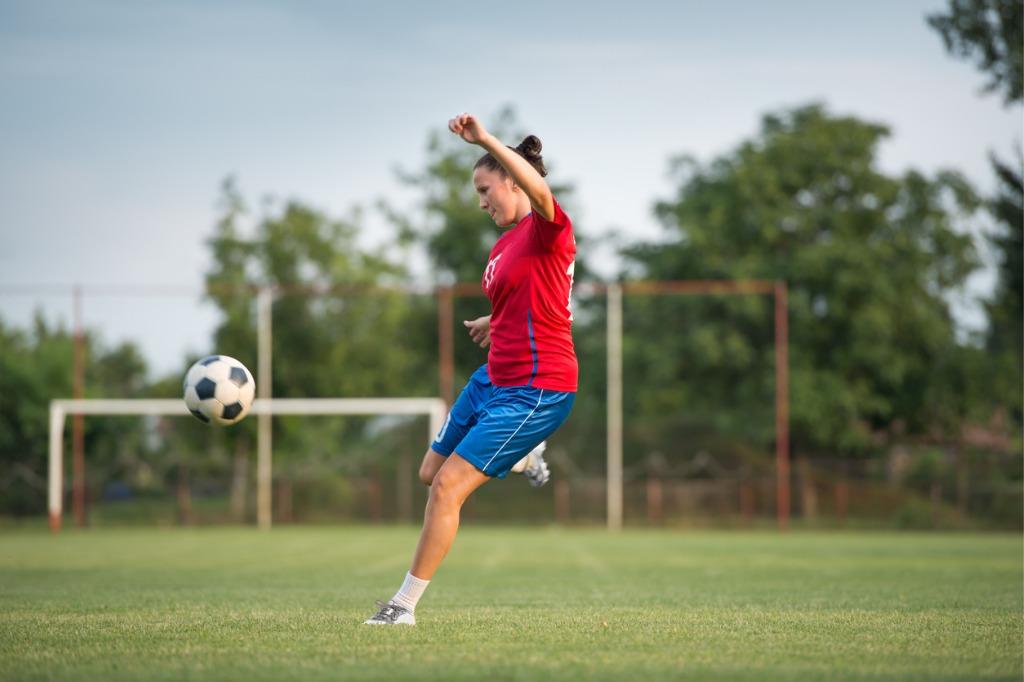Can You Sprain Your Shoulder? Shoulder Sprains and What to Do About Them
When most people think of a sprain, they imagine twisting an ankle or overstretching a wrist, but can you sprain your shoulder? The answer is yes. Although shoulder sprains are less talked about than other joint injuries, they do happen, and they can be just as painful and limiting.
If you’ve recently taken a fall, stretched your arm too far, or experienced a hit to the shoulder and are now dealing with pain, instability, or limited range of motion, a shoulder sprain could be the cause.

What Is a Shoulder Sprain?
A sprain refers to a stretch or tear in a ligament, which is the tough bands of tissue that connect bones to each other. In the case of a shoulder sprain, the ligaments that stabilize the shoulder joint become overstretched or torn, usually due to trauma or sudden force.
The shoulder is a complex joint made up of several bones, including the clavicle (collarbone), scapula (shoulder blade), and humerus (upper arm bone). These bones are held together by various ligaments that can be vulnerable to injury under certain conditions.
The most common types of shoulder sprains involve:
- The acromioclavicular (AC) joint, where the collarbone meets the top of the shoulder blade
- The sternoclavicular (SC) joint, where the collarbone meets the breastbone
- The glenohumeral joint, the ball-and-socket joint most people think of as the main shoulder joint
What Causes a Shoulder Sprain?
A shoulder sprain usually occurs when the ligaments are forced beyond their normal range of motion, typically due to:
- Falling directly onto the shoulder
- Landing on an outstretched arm
- A direct blow or impact, such as in contact sports like football or hockey
- Lifting something too heavy or with poor form
- Sudden jerking motions, such as catching a heavy object or arm being pulled forcefully
Depending on the severity of the force, ligaments can be slightly stretched, partially torn, or completely torn.
Symptoms of a Shoulder Sprain
Symptoms can vary based on the severity and location of the sprain, but common signs include:
- Pain at the top or front of the shoulder
- Swelling or bruising
- Tenderness to the touch
- Limited range of motion
- A popping or tearing sensation at the time of injury
- Shoulder instability or weakness
- Visible deformity or bump (especially with AC joint sprains)
If the pain is sharp, persistent, or accompanied by weakness or deformity, it’s important to seek a medical evaluation to confirm the diagnosis and rule out fractures or other injuries.
Grades of Shoulder Sprains
Shoulder sprains are typically graded based on severity:
- Grade 1 (Mild): Ligaments are stretched but not torn. Mild pain and minimal loss of function.
- Grade 2 (Moderate): Partial tear of the ligament. More significant pain, swelling, and limited mobility.
- Grade 3 (Severe): Complete tear of one or more ligaments, often resulting in joint instability or separation.
Each grade requires a slightly different approach to treatment and recovery time.
Diagnosing a Shoulder Sprain
At Motion Orthopaedics, diagnosis begins with a physical examination to assess swelling, tenderness, range of motion, and stability. Depending on the suspected injury, imaging may be used to get a clearer picture:
- X-rays to rule out fractures or bone displacement
- MRI to evaluate soft tissue damage, such as ligament tears or associated injuries like labral tears
Proper diagnosis is key to determining the appropriate treatment and ensuring a smooth recovery.
Treatment Options for a Shoulder Sprain
Most shoulder sprains, especially mild to moderate cases, can be treated non-surgically with a combination of rest, rehabilitation, and supportive care.
Rest and Activity Modification
Avoid activities that aggravate the shoulder. In more severe cases, you may need to wear a sling for a short period to allow the ligaments to heal.
Ice and Anti-inflammatory Medications
Apply ice packs for 15–20 minutes several times a day to reduce swelling. Over-the-counter medications like ibuprofen can help manage pain and inflammation.
Physical Therapy
Once pain and swelling are under control, physical therapy is crucial for:
- Restoring range of motion
- Strengthening the shoulder muscles
- Preventing future instability or reinjury
Your therapist may guide you through exercises focused on rotator cuff strengthening, posture correction, and shoulder stabilization.
Corticosteroid Injections (In select cases)
If inflammation persists or significantly interferes with daily function, a cortisone injection may be recommended to relieve pain and promote healing.
Surgical Treatment (For severe sprains)
If there’s a complete ligament tear or persistent instability that doesn’t improve with conservative treatment, surgical repair or reconstruction may be necessary. This is more common in Grade 3 AC joint separations or when combined injuries (like labral tears) are present.
Recovery Time
Recovery depends on the severity of the sprain:
- Grade 1: 1–2 weeks with conservative care
- Grade 2: 3–6 weeks, including physical therapy
- Grade 3: 6–12 weeks or more, especially if surgery is involved
The key is to follow a structured rehab plan and avoid returning to high-impact activity too soon, which could delay healing or cause reinjury.
Preventing Shoulder Sprains
While not all injuries are preventable, there are things you can do to reduce your risk:
- Warm up properly before exercise or sports
- Strengthen your shoulder and upper back muscles
- Work on flexibility and posture
- Use proper lifting techniques
- Avoid overuse or repetitive strain, especially in sports like tennis or swimming
When to See a Specialist
If you’re dealing with shoulder pain after a fall or injury, and wondering if you can strain your shoulder, the answer is yes, and it’s worth getting it checked out.
At Motion Orthopaedics, our team specializes in shoulder injuries from mild sprains to complex tears. If your pain isn’t improving or your shoulder feels unstable, we can help you get the right diagnosis and build a recovery plan that gets you back to doing what you love.
Our Shoulder Specialists
- Timothy D. Farley, MD
- Luke Choi, MD
- Jason P. Young, MD
- Nathan Mall, MD, CIME
- David J. King, MD
- Jason A. Browdy, MD
- Tyler R. Krummenacher, MD
Trust Motion Orthopaedics for Expert Shoulder Care
Whether it’s a mild sprain or a more serious shoulder injury, Motion Orthopaedics is here to help you heal with confidence. From diagnosis to treatment and beyond, we offer expert, personalized care every step of the way.
Click here to request an appointment today to start your recovery and take the first step toward a stronger, pain-free shoulder.




